This weekend sees the anniversary of the assassination of much-loved US President John F Kennedy. In this exclusive and superbly researched feature for pipingpress.com, writer Lt. Col. Robert Keith Gunther explores the association the iconic president had with the bagpipe and pipe bands….
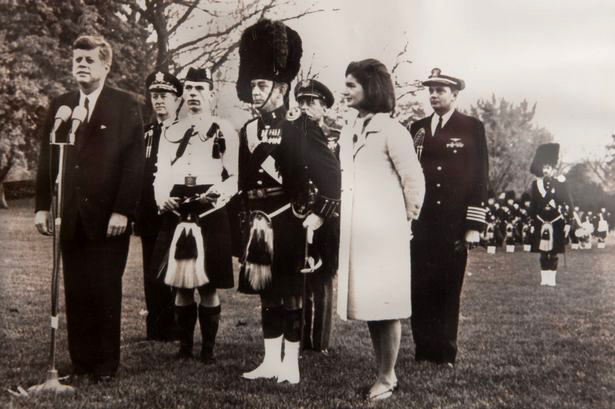
The 50th anniversary of the assassination of American President John Fitzgerald Kennedy (JFK) in 2013 invoked as much fascination as did his Presidency, affectionately known as Camelot. JFK’s assassination and the days immediately following have been seared into collective memory ever since. An integral component of that collective memory was the presence of the Great Highland Bagpipe during both the brightest and darkest days of JFK’s short, but colourful, reign.
No one can actually pin down the exact reason why the great Highland bagpipe is so closely associated with President Kennedy. Was it the ingrained image of pipers at numerous state functions, or of JFK being carried to his final resting place by the tune ‘The Mist Covered Mountains’? Was it a myriad of reasons: his Irish ancestry, his professed fondness for Scotland, the music itself, or the associated military precision of pipe band marching (JFK was a WWII veteran)? Whichever one actually applies, the Highland bagpipe, and its place in the Kennedy presidency, significantly contributed to the administration’s persona and facilitated the legend of Kennedy as an advocate of hope and the human spirit during a very turbulent historical period.
[easyrotator]erc_75_1413484305[/easyrotator]
The goal of this article is to chronicle the presence of pipers and pipe bands during the vibrant days of JFK’s Camelot, not merely during the dim days that culminated his presidency. It is important to redress this positive aspect of piping to the collective memory and to verify incorrect or misleading versions that now surround it. Washington Star music critic Irving Lowen’s comment about the JFK funeral is extremely valid when he said, ‘Every momentous event breeds legends, and already the legends about the music that accompanied the dead march proliferate. Some are entirely wrong’. It is a common misperception that only one pipe band played during JFK’s state funeral when in fact two separate and distinct units actually received this honour. One was a pipe band (the USAF Pipes and Drums) and the other was a contingent of nine pipers from the Black Watch. It is also a misperception that pipers symbolise only the darkest day of JFK’s tenure when in fact they symbolise its brightest moments too.
The Kennedys and the Arts
American historian Lewis Mumford stated that President Kennedy was ‘the first American President to give art, literature, and music a place of dignity and honour in our (American) national life’. The Kennedys embraced art, music, literature, and culture to showcase American contributions to the world. Mumford added that ‘the first and last major entertainment to be held at the Kennedy White House featured the bagpipes, an instrument appealing to his Irish ancestry’.
Numerous official state visits at the White House and official visits abroad incorporated the pipes. The USAF Pipe Band performed at the very first state dinner at the JFK White House for President Habib Bourguiba of Tunisia on May 3, 1961. Mrs. Kennedy took a trip to Pakistan on 24 March 1962, where she listened to pipers from the Khyber Rifles.
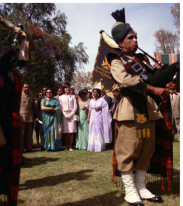
The USAF Pipe Band played for JFK at the Dulles Airport Dedication ceremony on November 17, 1962. Pipers Robert Fulton and George Lucas of the USAF Pipe Band danced in the East Room of the White House for a performance of the musical ‘Brigadoon’ after the state dinner given in honour of King Hassan II of Morocco on March 27, 1963. A silent film of the performance can be seen at http://www.jfklibrary.org/Asset-Viewer/Archives/JFKPPP-45.aspx. USAF Piper Jerry Cashion also states that the USAF pipers played at the Annual Easter Egg Roll in 1963.
On September 5, 1963, the USAF Pipe Band and the USMC band played for the arrival of King Zahir and Queen Homaira of Afghanistan on the South Lawn of the White House. This event initiated ‘big plans for starting the fall social season’ in 1963. The event was initially planned for outdoors, but due to rain, the 116 guests were moved into the State Dining Room for the initial portion. After dinner, JFK and the King observed the US Marine Corps band and USAF Pipers followed by fireworks from the second floor balcony of the White House. It was described as ‘a magnificent display’. A silent video of this event can be seen at http://www.jfklibrary.org/Asset-Viewer/Archives/USG-03-A.aspx
A USAF Pipe Band Quartet performed at the official state visit of Prime Minister Lemass of Ireland around October 15, 1963. Jerry Cashion commented that at this event JFK said, ‘Here come the Ladies from Hell’. The JFK library has an audio recording of this state visit (no piping however).
[easyrotator]erc_14_1414056032[/easyrotator]James Neary of the USAF Pipe Band was put on official military orders to go from Washington DC to New York to borrow Irish kilts from the County Tyrone Pipe Band in NY in lieu of wearing ‘Irish costumes’ that the White House Social secretary had intended to acquire from a costume shop for them to wear during their performance.
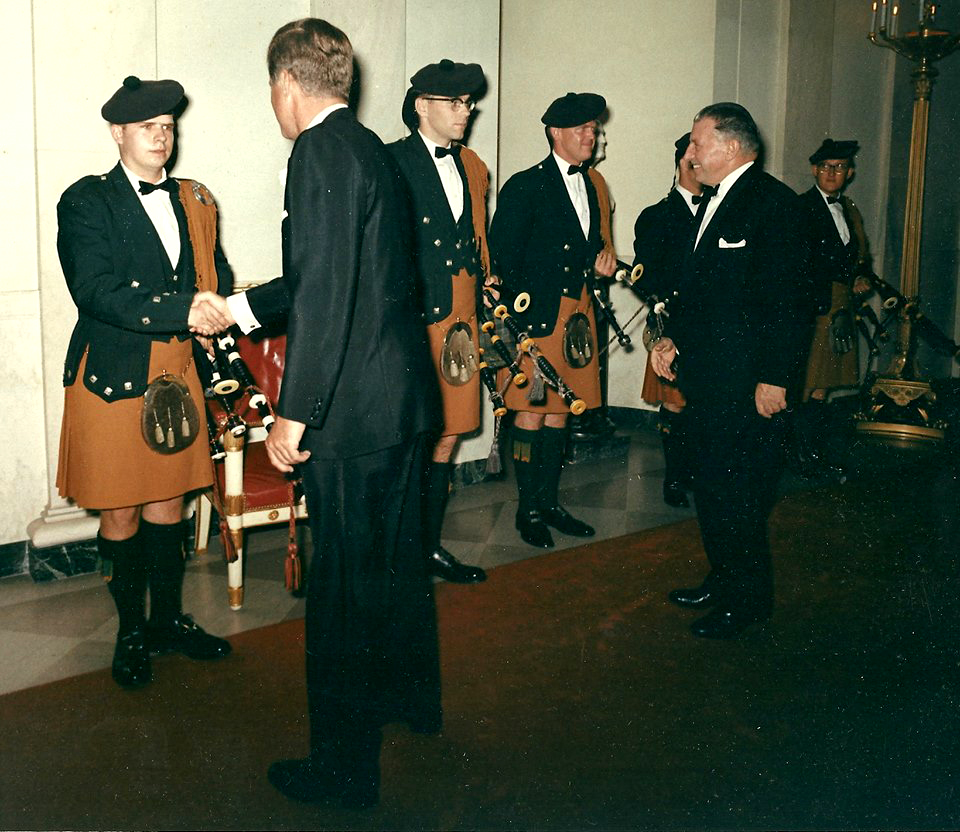
The most publicised Piping event, as well as the last official state event of the JFK White House, was the Black Watch charity performance on the South Lawn on Wednesday, November 13, 1963. It was dubbed OPERATION WHITEHOUSE by the Black Watch Officer. President Kennedy’s affinity for Scotland (and piping) is clearly evident in his opening remarks at this event. It can be viewed at the following JFK Library link: http://www.jfklibrary.org/Asset-Viewer/Archives/JFKWHF-WHN11.aspx. According to Carl Anthony online, it was ‘the first and last time where the entire First Family, President John F. Kennedy, First Lady Jacqueline Kennedy, First Daughter Caroline Kennedy and First Son John Kennedy ever made a public appearance at an official White House event together’. It would end up being President Kennedy’s last Happy Day prior to his assassination.
What is remarkable about the event is that the President opened up the White House to 1,700 underprivileged Washington DC area children as guests to this historical performance. If we look closely at pictures from the time we see how the children present were an integrated composite of America, something that was quite uncommon in the early 60s in the segregated United States. It was not just a charity performance on the South Lawn, but also a composite of JFK’s views on Civil Rights.
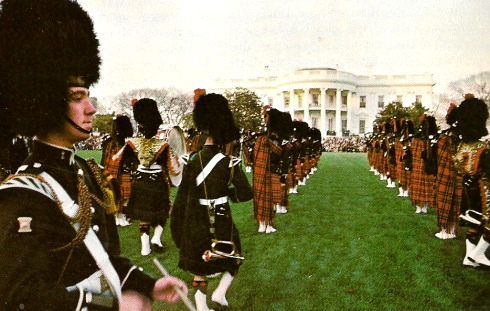
The President opted not to invite 400 children of members of Congress as it would have detracted from ticket sales of the Black Watch performance in Washington DC on November 19, 1963 as well as causing a traffic jam by the mothers who would have taken their children to the event. Nancy Tuckerman, the White House Social Secretary, had the President approve the use of 12 military buses to transport the children to the White House.
Upon their arrival at Andrews Air Force Base in Washington, DC, the Black Watch were greeted on the day of the performance at 1200 by the USAF Pipe Band. They had lunch and changed into their regimental attire for the event. The last plane didn’t arrive till 1300 that day which shortened the timeline, to say the least, according to the Black Watch’s Red Hackle magazine. The article goes on to state that the event came about when JFK told the UK Ambassador that he wished to be ‘serenaded by the Black Watch’ thus the charity event came about. The Black Watch had a two-day period to accommodate the performance. November 14, 1963 was an alternate day in case of in bad weather.
An interesting perspective of the event is from Michael Daly whose Irish father, Chuck Daly, was a special assistant to President Kennedy. According to the article ‘My Last Day with JFK’, Michael Daly was selected as a White House junior host for the youngsters who attended the event. Daly’s main task of the day was ‘little more than to point toward an enormous supply of cookies. They devoured in what had to be a world record’. Another interesting moment was described by former Black Watch soldier Dennis Byrne who tells of the trouble they got into when the bandsmen came across a huge trampoline in the White House gardens. He said, “We were jumping up and down on this trampoline in full Highland dress – you can imagine the carry-on at that age’. Secret Service agent Clint Hill was the one who told them off. Mr Hill was the agent with the President in the limousine in Dallas during the assassination.
Mr. Daly wrote that the Black Watch filed out onto the South Lawn at 4pm, and upon the President’s beginning to speak ‘he seemed very much a chief and the spectators all rose unbidden’. Daly commented that he figured he would have ample opportunity to see Kennedy in the future. He did not imagine he would hear these pipers again so soon. ‘To us, what was fixed was the President’, Douglas (Michael Daly’s brother) wrote. ‘The momentary was the bagpipes.’

At the conclusion of the performance, the Black Watch band was invited inside the White House for refreshments. The band had sodas, whiskies and conversation with Mrs. Kennedy and other high level Kennedy administration members, something that would have been unheard of in the UK at the time. The Red Hackle Magazine, the regimental magazine of the Black Watch, stated, ‘The President and Mrs. Kennedy were kindness itself, behaving in a most free and natural way, with the children running at their feet.’
As the Black Watch departed the White House grounds, JFK even boarded the band’s bus to pass on his personal thanks to the men who played that day. According to Bruce Cowie, ‘We were leaving the White House on the bus and JFK came on with Secretary of State Dean Rusk to thank us personally. It was a real personal touch.’ The Red Hackle magazine summarised it as ‘a gesture which was as kind as it was spontaneous, and will live long in our memories’. Piper Bruce Cowie said JFK shook every piper’s hand and thanked them for their work — something that ‘still resonates with him today’. In a recent interview, Bruce Cowie stated that this interaction, ‘merely underlines to me, the greatness of the man’. He went on to add that, ‘Only the Queen Mother ever showed the same thoughtfulness to the ordinary rank and file’.
According to Martin Dalziel’s article ‘An Amazing Experience – Forfar Man Remembers the Day he met JFK’, multiple ‘Angus lads’ also performed that day including Dennis Byrne, a bass drummer and Highland dancer, Ronald Cairns, a piper, now living in Australia, and Bob Simpson, a drummer from Arbroath. In Dalziel’s article, Dennis Byrne is identified as playing ‘a key role for the group during the White House event by holding an officer’s dirk’ for presentation to JFK.
After the South Lawn charity performance, the Black Watch continued with their ongoing three-month tour in the U.S.A. According to the Bolling Air Force Base Paper, the USAF Pipe Band had been guests of the President that day as spectators. Seamus Neary of the USAF Pipe Band remembers speaking with Lt-Col Duncan Beat, the tour’s musical director, in a restaurant near their DC hotel. Neary stated, ‘He was not only a delightful person, but also a very fine musician’. Beat went on to become the Director of the Royal School of Military Music at Kneller Hall. The tune Lt-Col Duncan Beat, by an unknown composer, appears in Volume III of the Scots Guards tune book Standard Settings of Pipe Music.
Immediately following the South Lawn performance, Mrs. Kennedy, on November 14, sent a thank you letter to Major Wingate-Gray 1963. She wrote, ‘The precision, formation, and timing of your brigade leaves no margin for improvement, and I don’t know when I have seen the President enjoy himself more.’ The First Lady also commented on how the Kennedy children, Caroline and John, interacted with Major Wingate-Gray on the porch. She enclosed photos for each member of the band as a memento. As if the Black Watch performing on your lawn couldn’t be topped, the President was visited at the White House a few hours later by Greta Garbo. Perhaps this was just an ordinary day in Camelot?
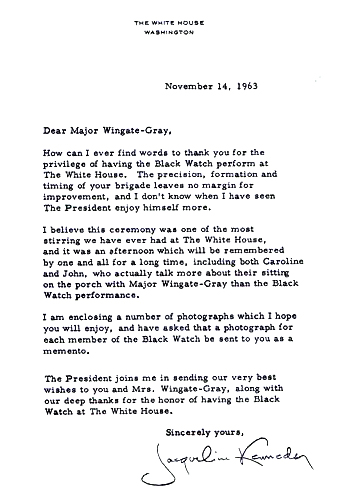
On November 17, 1963, Drum Major/Piper James Neary of the USAF Pipe Band hosted a party at Bolling Air Force Base, Washington, D.C. It included Pipers and Drummers from the both the USAF Pipe Band and the Black Watch. The Black Watch performed in DC on November 18, 1963. USAF Pipe Band Members included: Sandy Jones, Jim Neary, John Bosworth, Alex Massie, John Ryan, and Jack McGilvary. Black Watch Pipers included Alec Menzies, Bobby O’Donnell, Drew Carstairs, Jimmy Hume, Dave Robertson, and Drummer Lenny Lang. Neary has an audio tape of the party featuring Black Watch pipers Bobby O’Donnell and Dave Robertson singing some traditional songs.
Stay tuned for the next excerpt of this article. If anyone has memories of the above, or relatives who were involved, perhaps they would like to share their reminiscences. Please use the comment space below. Check out the Black Watch Museum here.

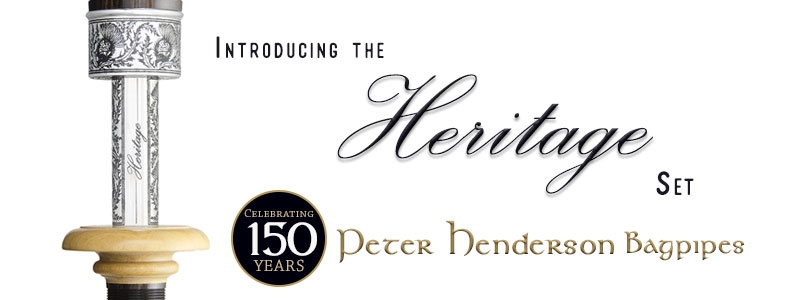









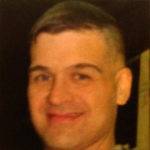









My dad & uncle were both in The Black Watch and on the 1963 US tour. Dad was a piper and his elder brother a sword dancer. Both are still alive. Dad says JFK got onto the bus afterwards to personally thank them and talk to the band and the reason they got asked back for the funeral was because both the Kennedys enjoyed the concert so much. Immediately after the assassination, the band was confined to their hotel by an over-zealous FBI but soon allowed to continue. The band had previously been to the USSR on tour too, but I cannot find much information about that.
your comments are consistent with other sources I used in this story.
My Uncle, Tom Kirkpatrick, who still plays and teaches the bagpipes is in 2 pictures. He has inspired many to play the pipes.
Mt Brother Michael Rodden was there… sadly no longer with us. My other brother Alex was in the 74 tour. Survived now by myself and older brother dennis formally Pipe Major of the Black watch and KOSB
Love this series. I appreciate the journey into the past. While only 14 when JFK died I remember his presidency and sadly his funeral well. The pipes stirred my soul.
Many years later, as a piper with the Pipes and Drums of the 91St Division, USAR, I had the opportunity to perform with the band at the Kennedy Center and at the U.S. Capitol building.